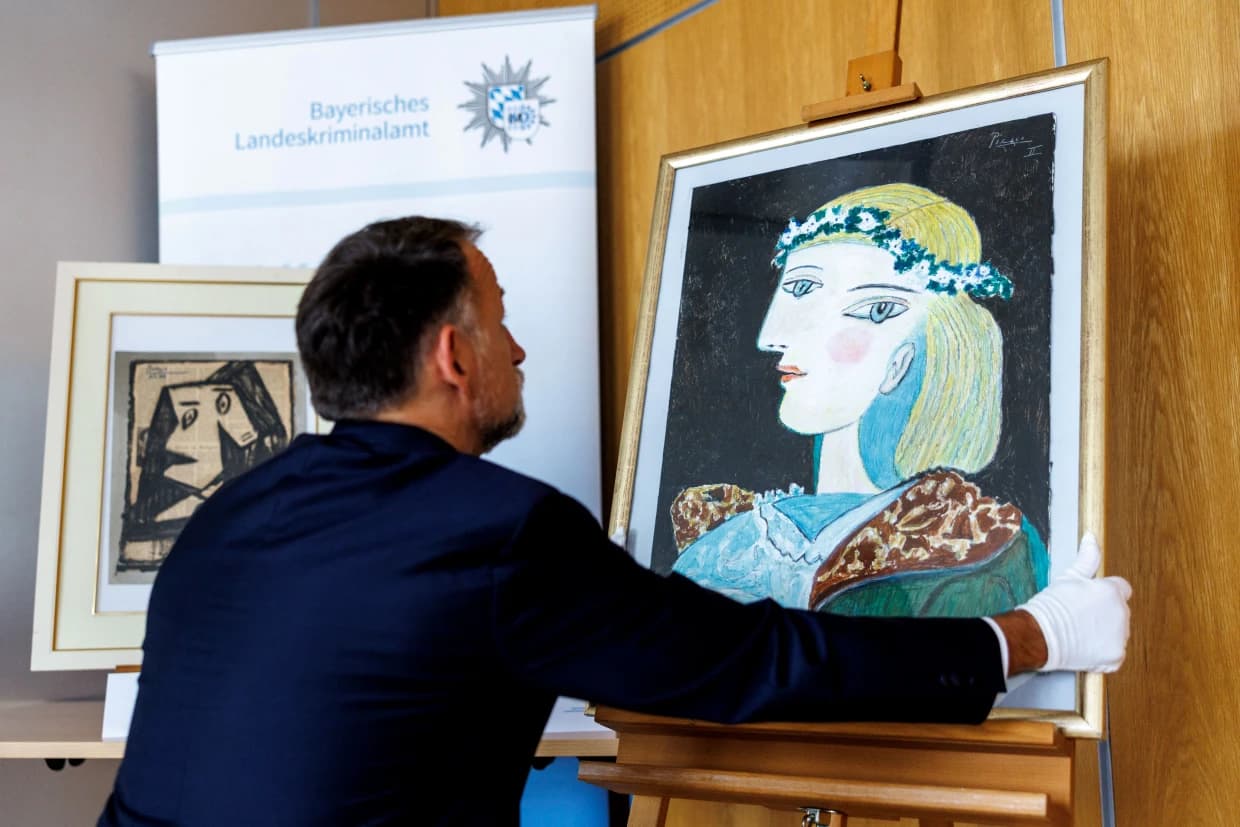We're loading the full news article for you. This includes the article content, images, author information, and related articles.
A major police operation across Germany, Switzerland, and Liechtenstein has exposed a sophisticated art forgery network attempting to sell fake masterpieces. While no direct links to East Africa have emerged, the case highlights the global threat of art fraud

MUNICH, GERMANY – Police in the German state of Bavaria have dismantled a large-scale art forgery ring, seizing counterfeit paintings falsely attributed to masters such as Pablo Picasso, Rembrandt van Rijn, and Frida Kahlo. The operation, which culminated in coordinated raids on Wednesday, 15 October 2025, spanned Germany, Switzerland, and Liechtenstein, revealing a network accused of attempting to defraud collectors of millions of euros. The Bavarian State Criminal Police Office (BLKA) announced on Friday, 24 October 2025, that the primary suspect is a 77-year-old German man, who allegedly orchestrated the scheme with the help of ten accomplices.
The investigation was initially triggered when the main suspect attempted to sell two purported Picasso paintings, including a portrait of the artist's muse, Dora Maar. However, the most audacious part of the scheme involved a forged copy of Rembrandt's 1662 masterpiece, "De Staalmeesters" (The Syndics of the Drapers' Guild). The suspects offered this counterfeit for an astonishing 120 million Swiss francs (£113 million). In a particularly bizarre twist, the original, world-renowned painting hangs in the Rijksmuseum in Amsterdam, a fact that underscored the brazen nature of the fraud. The forged Rembrandt, believed to be a 20th-century copy, was confiscated in Switzerland from an 84-year-old Swiss woman, who is now also under investigation. An art expert confirmed the painting was, as suspected, a copy and not a lost masterpiece.
The criminal enterprise was extensive, with at least 20 forged artworks being offered for sale. Besides Picasso and Rembrandt, the counterfeit collection included works supposedly by Peter Paul Rubens, Joan Miró, and Amedeo Modigliani. The asking prices for these fakes ranged from €400,000 to the nine-figure sum sought for the Rembrandt. The coordinated raids led to the arrest of the 77-year-old ringleader and a 74-year-old German man accused of preparing fraudulent reports to authenticate the forgeries. Both have since been released on bail pending further investigation. Authorities seized documents, mobile phones, and multiple suspected forgeries which will undergo detailed expert examination in the coming weeks.
While this investigation has been confined to Europe, it serves as a critical reminder of the pervasive and sophisticated nature of the global art forgery market. For emerging art scenes like those in Kenya and across East Africa, such cases carry significant weight. The East African art market has seen a notable boom in recent years, attracting both local and international collectors and investment. This growth, however, also increases its vulnerability to fraudulent activities.
Art forgery is not a distant problem. In South Africa, for example, the market has been flooded with fakes of works by black modernist painters, threatening the legacy of key artists and defrauding investors. Experts note that a lack of comprehensive published research and provenance records for many African artists makes it easier for forgers to operate. These criminal networks often use the internet to sell their wares, creating a veneer of legitimacy with fake certificates of authenticity.
The high-profile nature of the European bust underscores the methods used by fraudsters—from creating convincing copies to fabricating authentication documents. As the value and profile of Kenyan and African art continue to rise, collectors, galleries, and institutions in the region must exercise heightened vigilance. This incident highlights the universal need for rigorous due diligence, expert verification, and a transparent chain of ownership for any significant art acquisition. The fight against art fraud is a global one, and the lessons from this European case are a cautionary tale for all participants in the art ecosystem, including those in Kenya, to protect the integrity of their cultural heritage and investments. FURTHER INVESTIGATION REQUIRED into potential similar networks targeting African art.
Keep the conversation in one place—threads here stay linked to the story and in the forums.
Other hot threads
E-sports and Gaming Community in Kenya
Active 6 months ago
Popular Recreational Activities Across Counties
Active 6 months ago
The Role of Technology in Modern Agriculture (AgriTech)
Active 6 months ago
Investing in Youth Sports Development Programs
Active 6 months ago